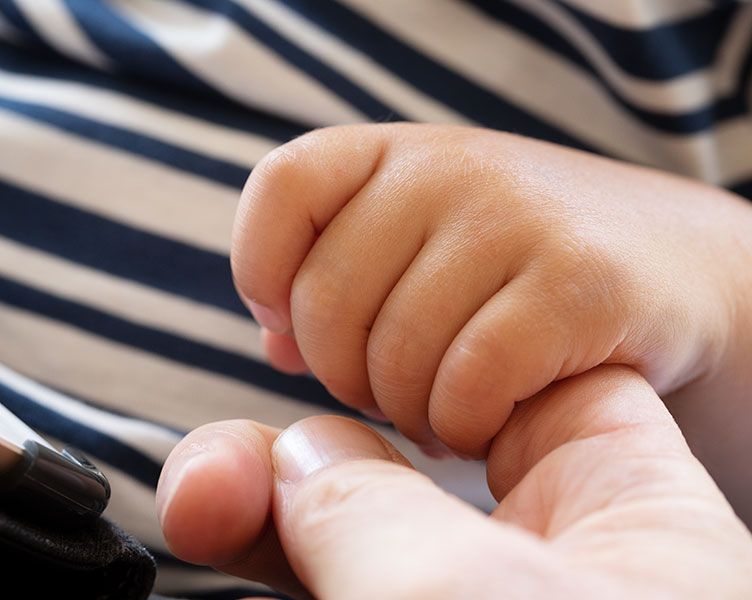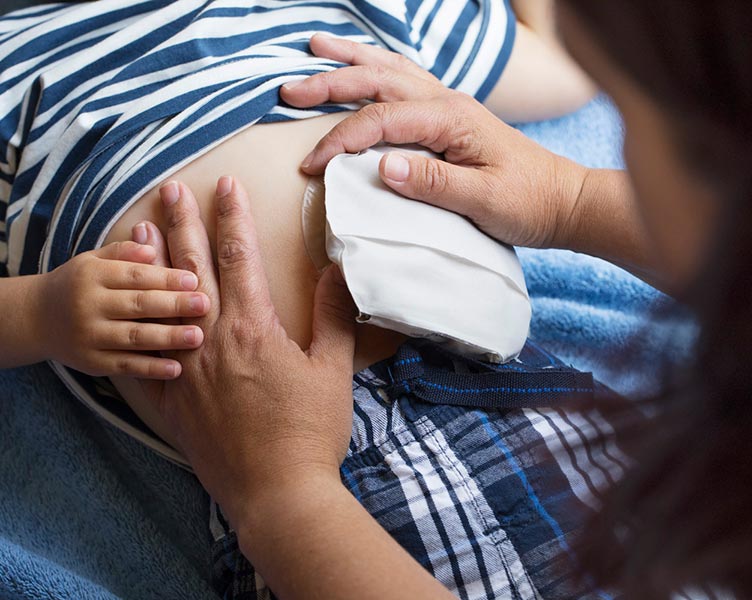Your child’s colostomy
If your child has a surgically created opening between the large intestine (the colon) and abdominal wall, it is called a colostomy. Your surgeon, Wound Ostomy Continenence Nurse or pediatric nurse can help you understand the reason for your child’s ostomy surgery.
During a colostomy surgery, the end of the large intestine is brought out onto your child’s abdominal surface – this is called the stoma and will now be the point of exit for your child’s stool.
As a parent, you play an important role in ensuring that your child's ostomy is well-maintained to ensure proper healing. The following topics are important topics in order to provide the best care for your child.
What is a pouching system?
Since there is no muscle around the stoma, your child will not be able to control when stool passes through the ostomy and will therefore need to wear an ostomy pouch, attached to their body at all times, to collect waste. The pouch is held onto the body with an adhesive called a barrier. The barrier has a hole in the middle just large enough for the stoma. It’s called a barrier since it holds the pouch onto the body and protects the skin around the stoma so that no stool touches the skin.
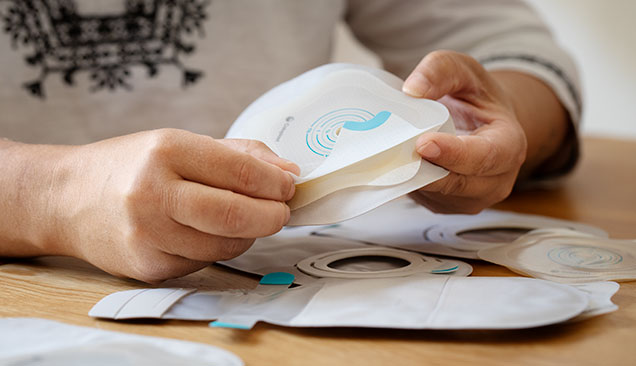
A temporary or permanent colostomy?
Depending on your child’s specific condition, the colostomy may be temporary or permanent. When your child’s ostomy is temporary, it is created as a temporary measure to allow the intestine a chance to rest and heal. In this case, the large intestine will eventually be reconnected and the stoma opening will be closed. When your child’s ostomy is permanent, the large intestine is not reconnected.
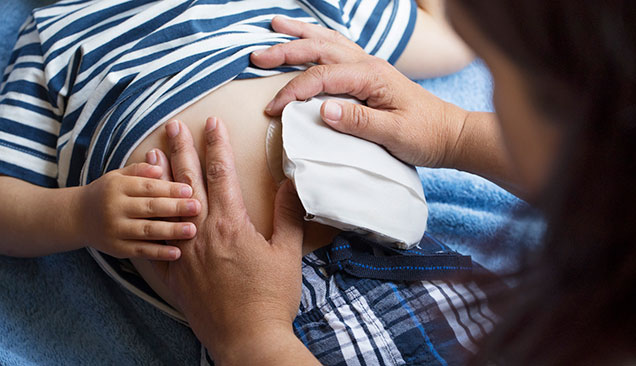
Expect changes in your child’s output
A colostomy usually begins to function about 3-4 days after surgery. Your child’s first output will be somewhat liquid in nature. However, within the next few weeks, the stool may thicken to a soft-formed consistency. Depending upon where in the intestine the colostomy was created (beginning, middle, end) will determine how much water is absorbed from the stool and how thin or thick it will be. The further stool travels down the large intestine, the more water is absorbed and the thicker it will become. Even with a colostomy, your child may still have their rectum in place and may feel the need to have a bowel movement. This sensation occurs because the intestine continues to produce mucus, which may pass from the rectum. Should this happen to your child, it’s important to remember that it’s completely normal.
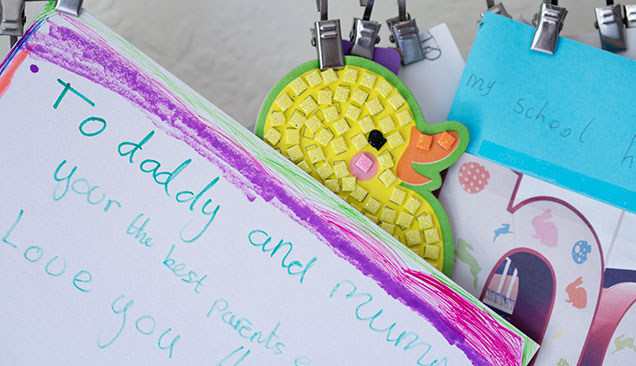
Beware of skin irritation
The skin surrounding the stoma is called the peristomal skin. It’s hard to overstate the importance of maintaining healthy skin in this area. As a parent, you should ensure that this area is kept intact without irritation, rashes, or redness. This will ensure better comfort for your child and make sure the pouching system also attaches better to the skin. However, irritation can occur and if so, proper care should return your child’s skin to good health.
This information is for educational purposes only. It is not intended to substitute for professional medical advice and should not be interpreted to contain treatment recommendations. You should rely on the healthcare professional who knows your child's individual history for personal medical advice and diagnosis.
Call your healthcare provider if you have any medical concerns about managing your child's ostomy. You may also contact a Coloplast Care Advisor for product usage and availability questions at 1-877-858-2656.

